Related Research Articles

Sir Fred Hoyle FRS (24 June 1915 – 20 August 2001) was an English astronomer who formulated the theory of stellar nucleosynthesis and was one of the authors of the influential B2FH paper. He also held controversial stances on other scientific matters—in particular his rejection of the "Big Bang" theory (a term coined by him on BBC Radio) in favor of the "steady-state model", and his promotion of panspermia as the origin of life on Earth. He also wrote science fiction novels, short stories and radio plays, and co-authored twelve books with his son, Geoffrey Hoyle. He spent most of his working life at the Institute of Astronomy at Cambridge and served as its director for six years.

Charles Hard Townes was an American physicist. Townes worked on the theory and application of the maser, for which he obtained the fundamental patent, and other work in quantum electronics associated with both maser and laser devices. He shared the 1964 Nobel Prize in Physics with Nikolay Basov and Alexander Prokhorov. Townes was an adviser to the United States Government, meeting every US president from Harry S. Truman (1945) to Bill Clinton (1999).
Frank Jennings Tipler is an American mathematical physicist and cosmologist, holding a joint appointment in the Departments of Mathematics and Physics at Tulane University. Tipler has written books and papers on the Omega Point based on Pierre Teilhard de Chardin's religious ideas, which he claims is a mechanism for the resurrection of the dead. He is also known for his theories on the Tipler cylinder time machine. His work has attracted criticism, most notably from Quaker and systems theorist George Ellis who has argued that his theories are largely pseudoscience.

Leonard Susskind is an American physicist, who is a professor of theoretical physics at Stanford University, and founding director of the Stanford Institute for Theoretical Physics. His research interests include string theory, quantum field theory, quantum statistical mechanics and quantum cosmology. He is a member of the US National Academy of Sciences, and the American Academy of Arts and Sciences, an associate member of the faculty of Canada's Perimeter Institute for Theoretical Physics, and a distinguished professor of the Korea Institute for Advanced Study.
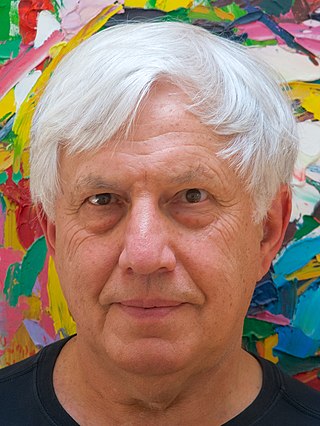
Andrei Dmitriyevich Linde is a Russian-American theoretical physicist and the Harald Trap Friis Professor of Physics at Stanford University.

Lawrence Maxwell Krauss is an American theoretical physicist and cosmologist who previously taught at Arizona State University, Yale University, and Case Western Reserve University. He founded ASU's Origins Project in 2008 to investigate fundamental questions about the universe and served as the project's director.

Maurice Goldhaber was an American physicist, who in 1957 established that neutrinos have negative helicity.

Edwin Charles Krupp is an American astronomer, researcher, author, and popularizer of science. He is an internationally recognized expert in the field of archaeoastronomy, the study of how ancient cultures viewed the sky and how those views affected their cultures. He has taught at the college level, as a planetarium lecturer, and in various documentary films. He has been the director of the Griffith Observatory in Los Angeles since first taking over the position in 1974 after the departure of the previous director, William J. Kaufmann III. His writings include science papers and journal articles, astronomy magazine articles, books on astronomy and archaeoastronomy for adults, and books explaining sky phenomena and astronomy to children.
Guillermo Gonzalez is an astronomer, a proponent of the pseudoscientific principle of intelligent design, and a research scientist at the University of Alabama-Huntsville. He is a senior fellow of the Discovery Institute's Center for Science and Culture, considered the hub of the intelligent design movement, and a fellow with the International Society for Complexity, Information and Design, which also promotes intelligent design.

Sean Michael Carroll is an American theoretical physicist and philosopher who specializes in quantum mechanics, cosmology, and philosophy of science. Formerly a research professor in the Walter Burke Institute for Theoretical Physics in the California Institute of Technology (Caltech) Department of Physics, he is currently an External Professor at the Santa Fe Institute, and the Homewood Professor of Natural Philosophy at Johns Hopkins University. He has been a contributor to the physics blog Cosmic Variance, and has published in scientific journals such as Nature as well as other publications, including The New York Times, Sky & Telescope and New Scientist. He is known for atheism, critique of theism and defense of naturalism. He is considered a prolific public speaker and science populariser. In 2007, Carroll was named NSF Distinguished Lecturer by the National Science Foundation.
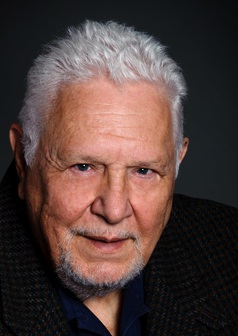
Victor John Stenger was an American particle physicist, philosopher, author, and religious skeptic.
The Carnegie Institution of Washington, known also for public purposes as the Carnegie Institution for Science (CIS), is an organization in the United States established to fund and perform scientific research. The institution is headquartered in Washington, D.C. As of June 30, 2020, the Institution's endowment was valued at $926.9 million. In 2018 the expenses for scientific programs and administration were $96.6 million. Eric Isaacs is president of the institution.
The Trotter Prize is awarded at Texas A&M University and is part of an endowed lecture series. It is awarded "for pioneering contributions to the understanding of the role of information, complexity and inference in illuminating the mechanisms and wonder of nature" and includes The Trotter Lecture which "seeks to reveal connections between science and religion, often viewed in academia as non-overlapping, if not rival, worldviews.
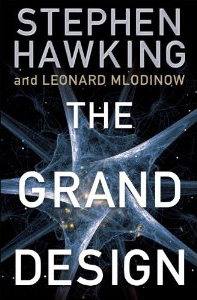
The Grand Design is a popular-science book written by physicists Stephen Hawking and Leonard Mlodinow and published by Bantam Books in 2010. The book examines the history of scientific knowledge about the universe and explains eleven-dimensional M-theory. The authors of the book point out that a Unified Field Theory may not exist.

Robert Miller Hazen is an American mineralogist and astrobiologist. He is a research scientist at the Carnegie Institution of Washington's Geophysical Laboratory and Clarence Robinson Professor of Earth Science at George Mason University, in the United States. Hazen is the Executive Director of the Deep Carbon Observatory.

Don Lincoln is an American physicist, author, host of the YouTube channel Fermilab, and science communicator. He conducts research in particle physics at Fermi National Accelerator Laboratory, and was an adjunct professor of physics at the University of Notre Dame, although he is no longer affiliated with the university. He received a Ph.D. in experimental particle physics from Rice University in 1994. In 1995, he was a co-discoverer of the top quark. He has co-authored hundreds of research papers, and more recently, was a member of the team that discovered the Higgs boson in 2012.
Stephen P. Maran is an American astronomer and popularizer who is known for his books, articles, and popular lectures for the general public, including Astronomy For Dummies.
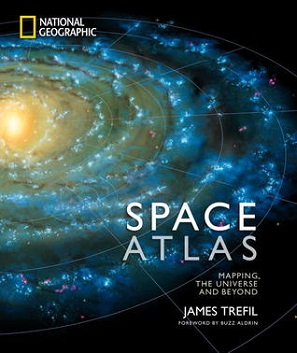
Space Atlas: Mapping the Universe and Beyond is a 2012 National Geographic book written by American physicist James S. Trefil, Robinson Professor of Physics at George Mason University. Subdivided into three parts, it contains photography, star charts, and general information surrounding "The Solar System", "The Galaxy", as well as "The Universe".
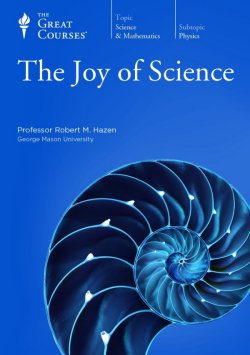
The Joy of Science is a popular video and audio course series, consisting of 60 lectures, each 30 minutes long, presented by Robert Hazen of the George Mason University and the Carnegie Institution of Washington. The course, first introduced in 2001, is part of The Great Courses series, and is produced and distributed by The Teaching Company, located in Chantilly, Virginia, in the United States.
Michael Riordan is an American physicist, science historian and author.
References
- ↑ Levens, R.G.C., ed. (1964). Merton College Register 1900-1964. Oxford: Basil Blackwell. p. 527.
- ↑ "Science Writer James Trefil to Speak, Media Relations, Carlton College". Press releases. Carlton College. 27 October 2003. Retrieved 21 January 2019.
- 1 2 3 "Trefil, James S, 1938 -". Encyclopedia.com. Retrieved 21 January 2019.
- ↑ Knappenberger, Paul Henry; Trefil, James (1999). A Guide to the Adler Planetarium & Astronomy Museum (Paperback). Adler Planetarium. Retrieved 23 January 2019.
- ↑ "Gemant Award Bestowed on Trefil". Physics Today. 54 (3): 91. March 2001. Bibcode:2001PhT....54R..91.. doi:10.1063/1.1366074.
- ↑ "American Institute of Physics announces awards for best science writing". phys.org. 13 February 2018. Retrieved 13 May 2018.
- ↑ "James Stanley Trefil - Who's Who Lifetime Achievement". Who's Who. 2017-06-07. Retrieved 21 January 2019.
- ↑ "New and Notable". Skeptical Inquirer. 41 (4): 60. 2017.
- 1 2 "Intelligent Design". researchgate.net. Retrieved 21 January 2019.
- ↑ "The facts of Life". ABE books. Retrieved 22 January 2019.